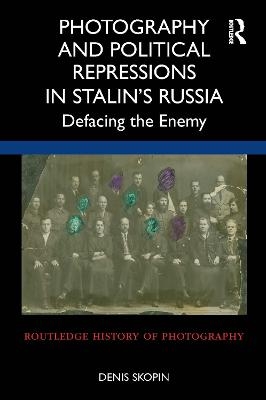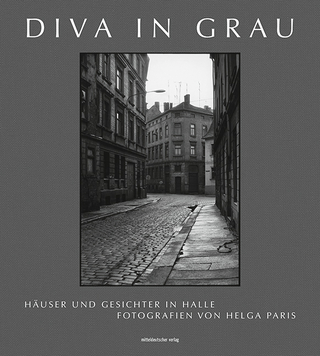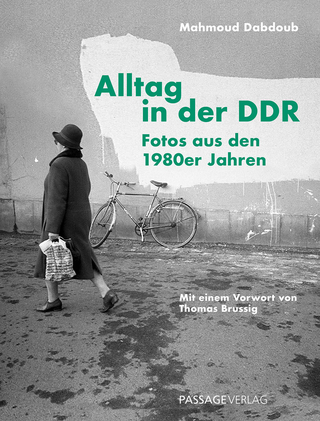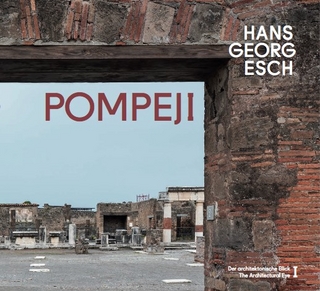
Photography and Political Repressions in Stalin’s Russia
Defacing the Enemy
Seiten
2024
Routledge (Verlag)
978-1-032-02707-4 (ISBN)
Routledge (Verlag)
978-1-032-02707-4 (ISBN)
This book is devoted to the phenomenon of removal of people declared “public enemies” from group photographs in Stalin’s Russia.
This book is devoted to the phenomenon of removal of people declared "public enemies" from group photographs in Stalin’s Russia.
The book is based on long-term empirical research in Russian archives and includes 57 photographs that are exceptional in terms of historical interest: all these images bear traces of editing in the form of various marks, such as blacking-out, excisions or scratches. The illustrative materials also include a group of photographs with inscriptions left by officers of Stalin’s secret police, the NKVD. To approach this extensive visual material, Denis Skopin draws on a wealth of Stalin-era written sources: memoirs, diaries and official documents. He argues that this kind of political iconoclasm cannot be confused with censorship nor vandalism. The practice in question is more harrowing and morally twisted, for in most cases the photos were defaced by those who were part of victim’s intimate circle: his/her colleagues, friends or even close family members.
The book will be of interest to scholars working in history of photography, art history, visual culture, Russian studies and Russian history and politics.
This book is devoted to the phenomenon of removal of people declared "public enemies" from group photographs in Stalin’s Russia.
The book is based on long-term empirical research in Russian archives and includes 57 photographs that are exceptional in terms of historical interest: all these images bear traces of editing in the form of various marks, such as blacking-out, excisions or scratches. The illustrative materials also include a group of photographs with inscriptions left by officers of Stalin’s secret police, the NKVD. To approach this extensive visual material, Denis Skopin draws on a wealth of Stalin-era written sources: memoirs, diaries and official documents. He argues that this kind of political iconoclasm cannot be confused with censorship nor vandalism. The practice in question is more harrowing and morally twisted, for in most cases the photos were defaced by those who were part of victim’s intimate circle: his/her colleagues, friends or even close family members.
The book will be of interest to scholars working in history of photography, art history, visual culture, Russian studies and Russian history and politics.
Denis Skopin is Associate Professor at the Faculty of Liberal Arts and Sciences at Saint Petersburg State University, Russia.
Introduction 1. Stalin’s Repressions: Historical Overview and Theoretical Examination 2. “Portrait” Criminal Cases 3. Group Portraits: Ontological and Political Backgrounds of the Genre 4. Collapse of Interpersonal and Family Relationships During the Terror: Editing Photographs of Friends and Family Members 5. The Photographs of “Former People” in the NKVD Card Indexes and Edited Photographs of the Secret Police Officers Conclusion
| Erscheinungsdatum | 16.03.2022 |
|---|---|
| Reihe/Serie | Routledge History of Photography |
| Zusatzinfo | 25 Halftones, color; 36 Halftones, black and white; 25 Illustrations, color; 36 Illustrations, black and white |
| Verlagsort | London |
| Sprache | englisch |
| Maße | 174 x 246 mm |
| Gewicht | 310 g |
| Themenwelt | Kunst / Musik / Theater ► Fotokunst |
| Kunst / Musik / Theater ► Kunstgeschichte / Kunststile | |
| ISBN-10 | 1-032-02707-X / 103202707X |
| ISBN-13 | 978-1-032-02707-4 / 9781032027074 |
| Zustand | Neuware |
| Informationen gemäß Produktsicherheitsverordnung (GPSR) | |
| Haben Sie eine Frage zum Produkt? |
Mehr entdecken
aus dem Bereich
aus dem Bereich
Fotos aus den 1980er Jahren von Mahmoud Dabdoub
Buch | Hardcover (2024)
Passage-Verlag
24,50 €
der architektonische Blick : the architectural eye
Buch | Hardcover (2024)
König, Walther (Verlag)
38,00 €


